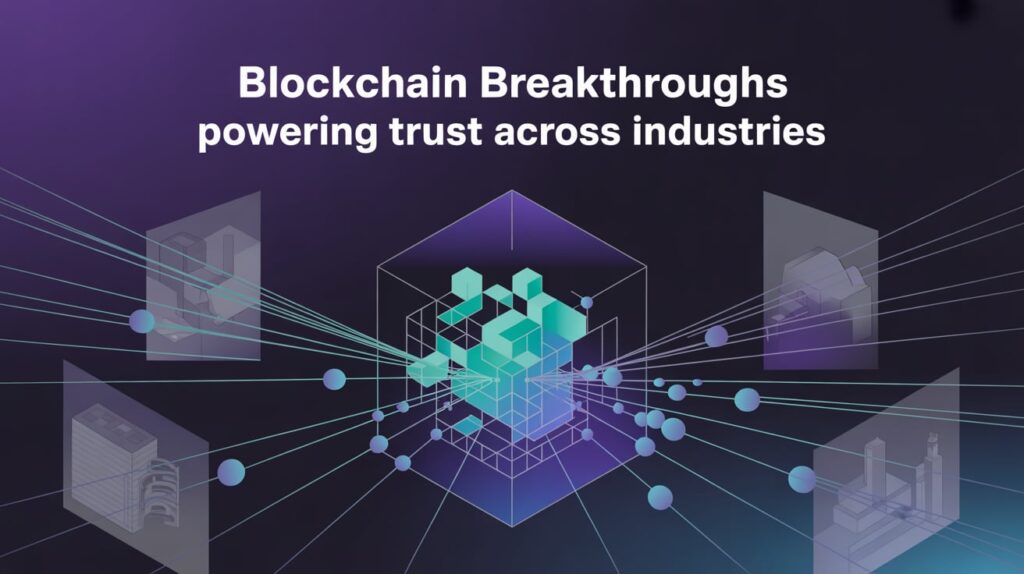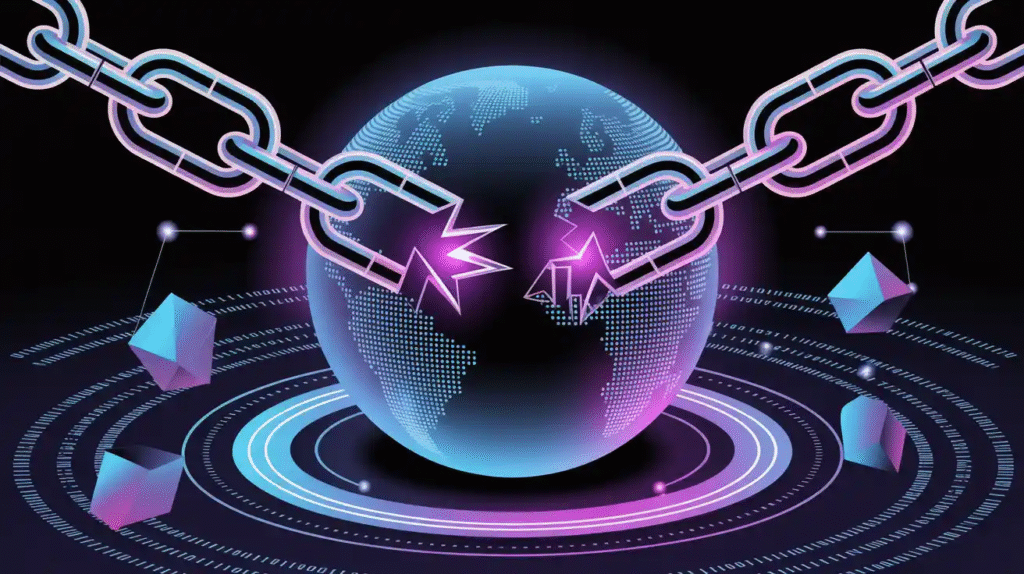Technology is changing how trust is build. For years, trust was controlled by banks, governments, big companies, and central systems. But with the rise of blockchain breakthroughs, that concept is getting rewired. From finance to supply chain to even healthcare, decentralized trust systems are becoming the new standard. What once sounded like a buzzword, today it is proving real value across industries.
In this blog, we will break down how blockchain is creating fresh solutions, what are the biggest blockchain use cases business leaders are betting on, and why smart contract platforms are more than hype. Also we will see what challenges remain and how an effective blockchain adoption strategy can make or break enterprise innovation.
Understanding Blockchain Breakthroughs in Simple Terms
From Bitcoin to Enterprise Blockchain Solutions
When blockchain first appeared with Bitcoin, most people thought it was only about digital money. But the real innovation was the underlying system. A blockchain is basically a digital ledger that cannot be easily altered. This small detail has massive impact because suddenly you don’t need one central authority to confirm transactions.
Now we see enterprise blockchain solutions far beyond currency. Businesses use blockchain for contracts, identity verification, logistics and even energy trading. The trust that was once expensive and slow to confirm can now be done almost instantly with much less cost.
Why Trust Became the Core of Blockchain
Traditional business models depend on middlemen. Banks verify payments, lawyers confirm contracts, auditors check books. Blockchain breakthroughs remove many of these middle players by giving every stakeholder a shared, verified record. Once data is written, everyone see the same truth.
That is why industries call blockchain a trust machine. The value is not only saving money, but reducing disputes, corruption and errors.
Blockchain Use Cases Business Can’t Ignore
We are seeing blockchain use cases business owners once never imagined. Retail companies track where products come from to prove authenticity. Food chains trace ingredients back to farms to guarantee safety. Governments test land registry on blockchain to stop fake property deals. These use cases show that blockchain is no longer about speculation, it is about everyday trust.
Decentralized Trust Systems Driving Change
Supply Chain Transparency and Security
One of the strongest decentralized trust systems applications is supply chain. Normally, supply chains are complex webs of suppliers, warehouses, transporters and retailers. Data gets lost, fraud happen, or counterfeit goods enter the system. Blockchain creates one digital thread from origin to consumer.
Imagine buying a diamond and scanning a QR code that prove exactly which mine it came from. This is not future, it is happening already. Companies like De Beers use blockchain for ethical sourcing. Same goes for pharmaceuticals, where fake drugs are a global problem.
Smart Contract Platforms in Real Business
A major blockchain breakthrough is the smart contract platforms like Ethereum, Solana or Hyperledger. These are self-executing contracts coded on blockchain. No need for a lawyer to manually check if conditions are met. If rule A happens, result B triggers automatically.
Example, an insurance payout for flight delay can happen automatically when airline data show a late flight. This speed up business, cut costs, and reduce human error.
Trust Beyond Finance – Healthcare and Identity
Blockchain is proving value in sensitive areas like healthcare. Medical records stored on blockchain give patients ownership and stop data manipulation. Identity systems built on blockchain are giving millions of unbanked people access to financial services for the first time. These are decentralized trust systems in action, empowering people not just companies.
Blockchain Adoption Strategy for Enterprises
Why Strategy Matters More Than Technology
Many companies jumped into blockchain with excitement but no clear plan. They wasted money on pilots that had no ROI. That is why a blockchain adoption strategy is crucial. Technology alone cannot deliver value unless it matches real business need.
Leaders should first ask: where in our process is trust the biggest problem? Once that is clear, blockchain can be applied to solve it. Without that question, projects fail.
Building Step by Step with Use Cases
Enterprises that succeed with blockchain start small. They test one use case, measure value, and expand gradually. For example, a shipping company might first use blockchain for tracking containers. Once that works, they extend it to customs documentation and payment settlements.
This approach also reduce risk and help teams learn. Scaling is easier when the foundation is solid.
Overcoming Challenges in Adoption
Still, challenges remain. Integration with existing systems is hard. Employees often resist new tech. Regulators are not always ready. Costs of development can also scare small companies.
But these challenges are not permanent. With proper training, strong partners, and government clarity, blockchain adoption becomes smoother. The companies who act early gain competitive advantage.
Future of Blockchain Breakthroughs Across Industries
Merging with Artificial Intelligence
The real power of blockchain may come when it merge with AI. Imagine AI making predictions and blockchain verifying the data integrity. In finance, this can create smarter fraud detection. In healthcare, AI diagnoses can be stored securely on blockchain to ensure they are not tampered.
This combination will push both technologies forward.
Sustainability and Green Blockchain
One big criticism of blockchain has been energy use. Old systems like Bitcoin consumed too much electricity. But new breakthroughs are solving it. Proof-of-stake systems use much less power. Enterprises are exploring blockchain use cases business that align with green goals. For example, carbon credit tracking on blockchain to ensure real emission reductions.
This is important because customers and regulators increasingly demand sustainability.
Wider Global Adoption and Regulation
We are still early. Many governments are testing regulation. Some embrace blockchain, others fear it. But one thing is clear, ignoring blockchain is not an option anymore.
Over the next decade, we will see enterprise blockchain solutions as common as cloud computing today. From supply chains to legal contracts, from banking to government IDs, blockchain will quietly become part of daily systems.
Conclusion
Blockchain is not magic, but it is a major trust revolution. The blockchain breakthroughs we see today are proving value in finance, supply chain, healthcare, identity, and many other sectors. From smart contract platforms that automate business to decentralized trust systems that cut fraud, industries are learning that trust can be coded into systems, not just promised by words.
Enterprises who move with a strong blockchain adoption strategy will lead, while those who ignore it may fall behind. The journey is not without obstacles, but the direction is clear. Blockchain is moving from hype to backbone. And in this new era, trust will not be demanded, it will be proven.




